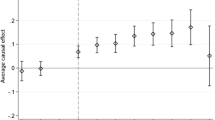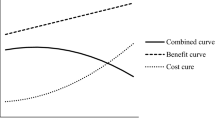Abstract
Empirical studies shows that SMEs are characterized by budget constraints and are reluctant to invest in innovation activities such as undertaking R&D, taking out patents, and hiring highly qualified research staff. This paper suggests that SMEs’ can adopt network alliances to minimize their resource constraints. SMEs’ network alliances such as joint ventures, R&D cooperation and firms’ co-located in the industrial zones positively influence the firms’ labour productivity and innovation performance. In addition, SMEs are engaged in product and process innovation, quality standards and management experience have a positive impact on the firm’s labour productivity and innovation performance. To the best of my knowledge, hardly any empirical study is carried out to analyze the Pakistani SMEs using unbalance panel data. This research paper has used 2 year unbalanced panel data (2002 and 2007) on 391 Pakistani manufacturing SMEs. Overall, two models have been used with generalized least square estimation and probit analysis using the random effects.
Similar content being viewed by others
Notes
The sample size slight increased (n = 400) for probit model because of labour productivity has been removed as dependent variable. Product innovation (dummy variable) is used as dependent variable in the second model.
References
Ahuja, G. (2000). Collaboration networks, structural holes and innovation. Administrative Science Quarterly, 45(3), 426–455.
Allen, James, & Andrew, James D. (2007). Formal versus informal knowledge networks in R&D: a case study using social networks analysis. R&D Management, 37(3), 179–196.
Anderson, A. R., & Benavides-Espinosa, M. M. (2011). Innovation in services through learning in joint venture. Services Industrial Journal, 31(12), 2019–2032.
Audretsch, D. B. (2004). Sustaining innovation and growth: public policy support for entrepreneurship. Industry and innovation, 11(3), 167–191.
Aw, B. Y. (2002). Productivity dynamics of small and medium enterprises in Taiwan. Small Business Economics, 18, 69–84.
Beck T., Demirguc-Kunt, A., & Levine, R. (2005). SMEs, growth and poverty: cross country evidence. Journal of Economic Growth, 10(3), 199–229.
Berchicci, Luca. (2013). Towards an open R&D system: internal R&D investment. External Knowledge Acquisition, Research Policy, 42(1), 117–129.
Bezic, H. Vojvodic, K and Stojcic, N. (2010). Export competitiveness, firm behaviour and obstacles for doing business, Poslovna Logistika u Suvremenom Menadzmentu, X, 11–26.
Bjerk, Lina; Johansson, Sara (2014). Innovation and Firm Collaboration-An Exploration of Survey Data, Working Paper 383, CESIS, 1–24.
Cantner, Uwe, Conti, Elisa, & Meder, A. (2010). Networks and innovation: the role of social assets in exploring firms innovative capacity. European Planning Studies, 18(12), 1937–1956.
Chapman, R., & Al-Khawaldeh, K. (2002). TQM and labour productivity in Jordanian industrial companies. The TQM Magazine, 14(4), 248–262.
Dasanayaka, W. S. B. (2008). SMEs in globalized world, a brief note on basic profits of Pakistan SMEs and possible research directions. Business Review, 3(1), 69–78.
Dimitriadis, N., Mike, S., & Andronikidis, A. (2005). Knowledge diffusion in localised economies of SMEs: the role of local supporting organisations. Environment and Planning C, Government and Policy, 23, 799–814.
Esteve-Escribe, A., & Peinado, L. (2009). The influence of top management teams in the strategic orientation and performance of small & medium-sized enterprises. British Journal of Management, 20, 581–597.
Estrada, Isabel, & Fuente, Gabriel. (2010). Technological joint venture: formation under the real option approach. Research Policy, 39(9), 1185–1197.
Freel, M. S. (1999). Where are the skills gaps in innovative small firms? International Journal of Entrepreneurship Behaviour & Research, 5(3), 144–154.
Freel, S. M. (2000). Barriers to product innovation in small manufacturing firms. International Small Business Journal, 18(2), 60–80.
Fukugama, Nobuya. (2006). Determining factors in innovation of small firm networks: a case of cross industry groups in Japan. Small Business Economics, 27, 181–193.
Grando, A., & Belvedere, V. (2006). District manufacturing performances: a comparison among large, small to medium sized and District Enterprises. International Journal of Production Economics, 104(1), 85–96.
Gronum, S., Verreyne, L., & Kastelle, J. (2012). The role of networks in small and medium- sized enterprise and firm performance. Journal of Small Business Management, 50(2), 257–282.
Hadjimanolis, A. (1999). Barriers to innovation for SMEs in small less developed country: Cyprus. Technovation, 19(9), 561–570.
Hall, B. H., & Lotti, F. (2009). Innovation and Productivity in SMEs: empirical Evidence for Italy. Small Business Economics, 33, 13–33.
Harris, R. (2009). Spill over and backward linkages effects of FDI: empirical evidence for the UK’. SERC Discussion Paper, 16, 1–29.
Harris, R., & Trainor, M. (2005). Why do some firms undertake R&D activities whereas other do not? A study of attitudes to R&D using a sample of matched firms’. CPPR, University of Glasgow (pp. 1–24).
Hoang, T. D., Igel, B., & Laosirihongthong, T. (2010). Total quality management (TQM) strategy and organisational characteristics: evidence from recent WTO member. Total Quality Management, 21(9), 931–951.
Hoffman, K., Parejo, M., & Bessant, J. (1998). Small firms, R&D, technology and innovation in the UK: a literature review. Technovation, 18(1), 39–55.
Hsiao, C. (2007). Panel data analysis: advantages and challenges. TEST (pp. 1–63).
Hung, V.T. (2007). SMEs and Supply Chains, Director General National office of Intellectual Property of Vietnam Macao (pp. 1–8).
Hussain, N. (2000). Linkages between SMEs and large industries for increased markets and trade: an African perspective. Economic Research Paper, 53, 1–14.
Jamali, K. (2010). An evaluation of small & medium enterprises development in Pakistan. International Journal of Sustainable Development, 02(1), 34–50.
Jong, V. (2006). Determinants of product innovation in small firms: a comparison across industries. International Small Business Journal, 24(6), 587–609.
Karlsson, C., & Olsson, O. (1998). Product innovation in small and large enterprises. Small Business Economics, 10, 31–46.
Katila, R., & Shane, S. (2005). When does lack of resources make new firms innovative? Academy of Management Journal, 48(5), 814–829.
Khokhar, Y. (2010). SME Development Report 2010-11, SMEDA (pp. 1–50).
Kim, R. P. (2000). R&D and firm size in the information and telecommunications industry of Korea. Small Business Economics, 15(3), 183–192.
Koberg, Ralph, & Watson, John. (2012). The impact of total quality management adoption on small & enterprises financial performance. Accounting and Finance, 52, 421–438.
Koch, A., & Strotman, H. (2008). Absorptive capacity and innovation in the knowledge intensive business services sector. Economics of Innovation and Technology, 17(6), 511–531.
Lane, P. J., & Lubatkin, M. (1998). Relative absorptive capacity and interorganizational learning. Journal of Strategic Management, 19, 461–477.
Lin, Y.-J. (2009). Firm size and innovation performance: an empirical study from Chinese photoelectric industry. Innovation Management Industrial Engineering, 1–5.
Lopez-Navarro, M. A., & Callarisa-Fiol, L. (2013). Long-term orientation and commitment in export joint ventures among small & medium-sized firms. Journal of Small Business Management, 51(1), 100–113.
Mahmood, M. (2008). Labour productivity and employment in Australia Manufacturing SMEs. Journal of International Management, 4(1), 51–62.
Malik, S. A., & Iqbal, Z. (2010). TQM practices & organizational performance: evidence from Pakistani SMEs. International Journal of Engineering & Technology, 10(4), 20–25.
Marri, B. H., Gunasekaran, A., & Grieve, R. J. (1998). An integration into the implementation of computer integrated manufacturing in small and medium enterprises. International Journal of Avance Technology, 14, 935–942.
Minarelli, F., Raggi, M., & Viaggi, D. (2013). Network for innovation as a way to enhance competitiveness: an overview of Italian food SMEs Entering Networks. Conference Paper (pp. 1–10).
Mohsin, A. A., Halim, H. A., & Ahmad, N. H. (2015). Competitive intelligence among SMEs: assessing the role of entrepreneurial attitude orientation on innovation performance. In M. H. Bilgin, H. Danis, E. Demir, C. K. M. Lau (Eds.), Innovation, finance, and the economy. Proceedings of the 13th Eurasia business and economics society conference (pp. 15–22). Switzerland: Springer.
Musolesi, A., & Huiban, J.-P. (2010). Innovation and productivity in knowledge intensive business services. Journal of Productivity Analysis, 34, 63–81.
Nadine, B. (2015). Network and product innovation across European SMEs. Discussion Paper No. 229 (pp. 1–23).
Nadvi, K. (1992). Flexible specialization, industrial districts and employment in Pakistan. Working Paper 232 (pp. 1–40).
Narula, R. (2004). R&D collaboration by SMEs: a new opportunities and limitations in the face of globalization. Technovation, 1–17.
Radas, S., & Bozic, L. (2009). The antecedents of SMEs innovativeness in an emerging transition economies. Technovation, 29(6–7), 438–450.
Rammer, C., Czarnitzki, D., & Spielkamp, A. (2009). Innovation success of non- R&D–performers: substituting technology by management in SMEs. Journal of Small Business Economics, 33(1), 33–58.
Reddy, M. (2007). Small business in small economies: constraints and opportunities for growth. Social and Economic Studies. 56(1/2), 304–321.
Sampson, C. R. (2007). R&D alliances and firm performance: the impact of technological diversity and alliance organization on innovation. The Academy of Management Journal, 50(2), 364–386.
Sharma, B. (2003). R&D strategy and Australian manufacturing industry: an empirical investigation of emphasis and effectiveness. Technovation, 23, 929–937.
Shaw, E. (2006). Small firm networking: an insight into contents and motivating factors. International Small Business Journal, 24(1), 5–29.
Sikka, P. (1999). Technological innovations by SMEs in India. Technovation, 317–321.
Teirlinck, P., & Spithoven, A. (2013). Research collaboration & R&D outsourcing: different R&D personnel requirements in SMEs. Techonovation, 33, 142–153.
Terziovski, Mile. (2010). Innovation practice and its performance implications in small and medium enterprises in the manufacturing sector: a resource-based view. Strategic Managment Journal, 31, 892–902.
Thaver, Z. (2014). Progress analysis: SMEs analysis vital to long term sustainable growth. http://www.tribune.com.pk/. Accessed 20 Dec 2014.
van Staveren, I., & Knorringa, P. (2007). Unpacking social capital in economic development: how social relations matter. Review of Social Economy LXV, 1, 107–135.
Wiklund, J., & Shepherd, D. (2003). Knowledge-based resources, entrepreneurial orientation, and the performance of SMEs. Journal of Strategic Management, 24, 1307–1314.
Wiklund, J., Patzelt, H., & Shepherd, D. A. (2009). Building an integrative model of small business growth. Small Business Economics, 32(4), 351–374.
Wolff, J. A., & Pett, T. L. (2006). Small firms’ performance: modelling the role of product and process improvements. Journal of Small Business Management, 44(2), 268–284.
Wong, P. K., & Lee, L. (2008). Occupational choice: the influence of product vs. process innovation. Small Business Economics, 30, 267–281.
Wooldridge, J. (2007). Introductory Econometrics, 3rd edn. South Western College. www.tribune.com.pk. Accessed 30 Dec 2014.
Author information
Authors and Affiliations
Corresponding author
Rights and permissions
About this article
Cite this article
Rehman, N.U. Network alliances and firms’ performance: a panel data analysis of Pakistani SMEs. Eurasian Bus Rev 6, 37–52 (2016). https://doi.org/10.1007/s40821-015-0033-1
Received:
Revised:
Accepted:
Published:
Issue Date:
DOI: https://doi.org/10.1007/s40821-015-0033-1




